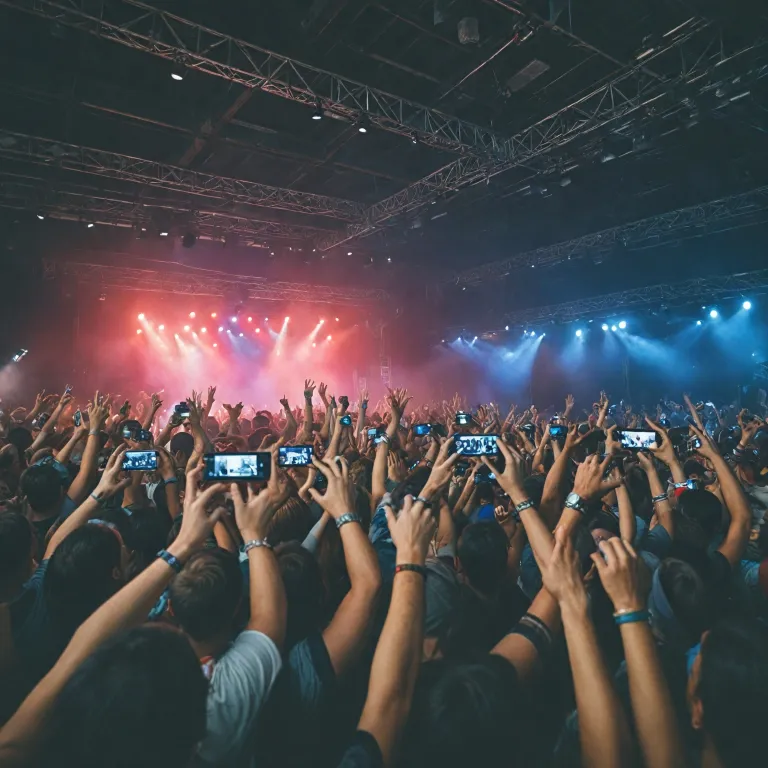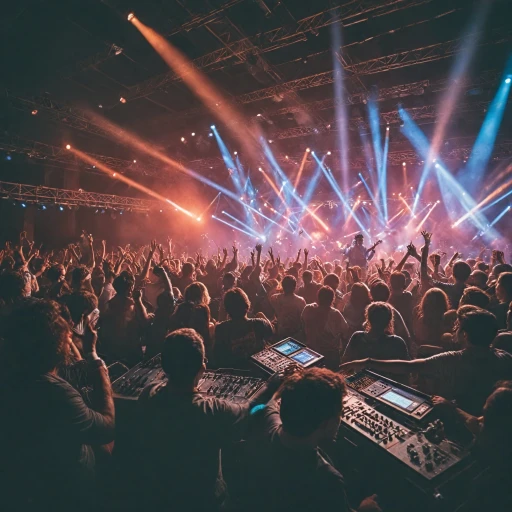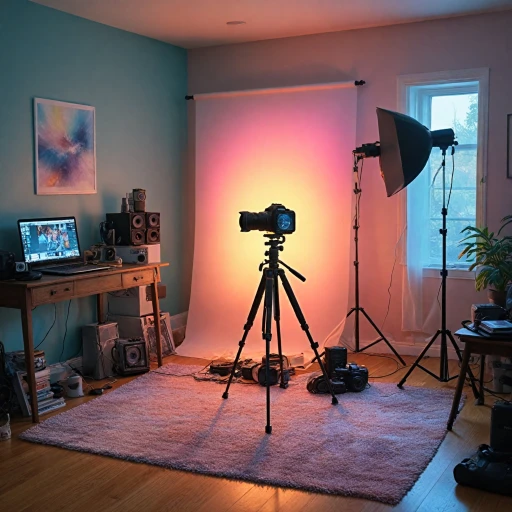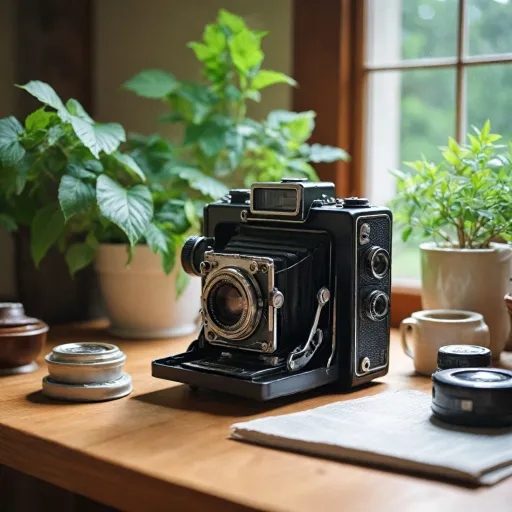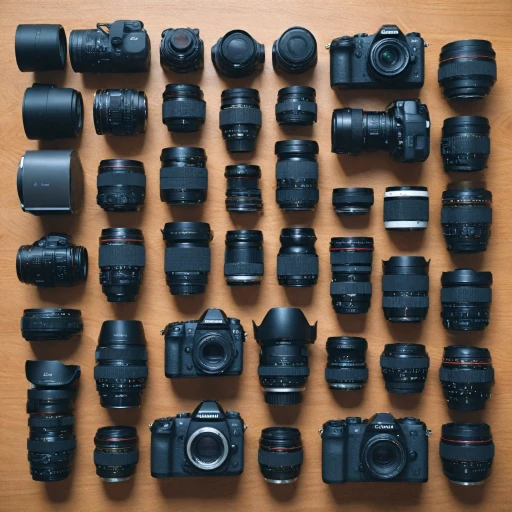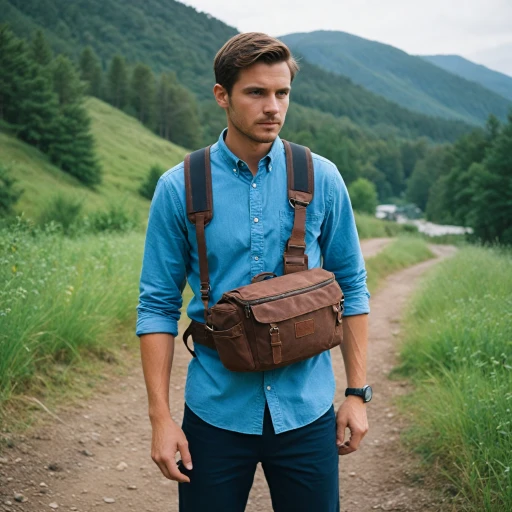
Understanding Concert Photography Challenges
Embracing the Unique Challenges of Concert Photography
Capturing moments at concerts can be an exhilarating yet demanding task. Concert photography presents unique challenges that set it apart from other genres, particularly due to the unpredictable and often harsh conditions of the concert environment. To succeed in this genre, it's essential to understand the typical hurdles and adapt your equipment choices accordingly. One of the primary challenges of shooting concerts is dealing with low light conditions. The dynamic and shifting lighting setups typically found at concerts can make it difficult to achieve clear and sharp images. This is why a camera with excellent low light capabilities is crucial. Factors such as high ISO performance and fast lenses become pivotal in ensuring your shots are well-exposed and free from noise. Moreover, concerts often involve a lot of movement, both from performers and the audience. A camera with fast autofocus and a high frame rate can be invaluable in these situations, allowing you to capture fleeting moments without blur. Mirrorless cameras and DSLR models specializing in fast shooting speeds are often favored by concert photographers for this reason. Concert settings can also be unpredictable, with sudden changes in stage lighting and unexpected performer interactions. This unpredictability demands a camera body that is robust and easy to handle, making durability and ergonomics important considerations. Many photographers opt for compact and lightweight cameras that offer great portability without compromising on image quality. Lastly, the audience and stage setups can sometimes limit your ability to move freely, so a versatile lens collection comes in handy. From wide-angle lenses for capturing sweeping views of the stage to telephoto lenses for isolating performers, understanding what to look for in lenses can significantly enhance your concert photography experience. The challenges of concert photography are numerous, but with the right approach and equipment, they can be overcome. Considering factors such as low light performance, speed, and versatility will set you on the path to capturing stunning concert images. If you're interested in exploring the ideal options for the photography enthusiast, you might find this gift guide helpful.Key Features to Look for in a Concert Camera
Essential Features for Capturing Unforgettable Concert Moments
When it comes to concert photography, owning a camera that performs exceptionally well in low light and handles fast-paced actions is crucial. Here's a breakdown of the key features to consider when exploring concert cameras.
- Low Light Performance: Concert venues often have dim lighting paired with sudden flashes and vibrant light shows. A camera with excellent low light capabilities is imperative. Look for cameras boasting high ISO sensitivity and advanced sensor technology, which enhances image quality while minimizing noise.
- Fast Autofocus System: Keeping up with the dynamic nature of live music events requires a quick and precise autofocus system. High-speed focusing ensures sharp images of performers, even in unpredictable environments.
- High Dynamic Range (HDR): Capturing the bright stage lights along with darker audience areas can be challenging. Cameras with a solid dynamic range offer improved contrast, ensuring both dim and bright elements in your photos are well-exposed.
- Compact and Portable Design: Since concert photographers may find themselves moving across crowded spaces, a compact camera body is advantageous. Mirrorless cameras are often preferred for their lightweight and portable build.
- Long Battery Life: Given the extended duration of concerts, cameras with long-lasting battery life are vital to avoid missing those key live moments due to a power outage.
- Video Recording Capabilities: Some moments are best captured with video. Ensure your choice includes high-resolution video capabilities to record memorable clips during the pursuit of your black-and-white or full-color photos.
These features set the foundation for top photography experiences at concerts. When combined with the right lens, even in challenging venues, your concert photos can truly shine, offering vibrant memories long after the music fades. For more insights on what makes a camera great for beginners, consider exploring guides that offer a deeper dive into camera tech and beginner-friendly models.
Top Camera Models for Concert Photography
Recommended Models to Elevate Your Concert Photography
Searching for the best cameras suited for capturing the once-in-a-lifetime moments of a live performance can be an overwhelming task. Fear not; several models stand out in the concert photography arena. Let's delve into some top contenders.- Sony Alpha a7 III: Known for its remarkable low light performance, this full frame mirrorless camera is a favored choice among concert photographers. It offers excellent dynamic range and high resolution images, ideal for dynamic concert environments.
- Canon EOS R6: Boasting swift autofocus and superb image quality, the Canon EOS R6 performs exceptionally well in challenging lighting conditions. Its compact body makes it easy to maneuver, making it highly suitable for crowded venues.
- Nikon Z6 II: The Z6 II from Nikon is a powerful mirrorless camera, renowned for its great light performance. It features high-speed continuous shooting and reliable video recording capabilities, perfect for capturing fast-paced concert scenes.
- Fujifilm X-T4: For photographers favoring a lighter setup, the Fujifilm X-T4 is a compelling option. Its impressive image stabilization and vibrant color reproduction are assets during concert shoots.
Lens Options for Concert Photography
Lens Options for Concert Photography
Concert photography poses distinct challenges, particularly when it comes to capturing sharp images in low light conditions. For this reason, selecting the right lens is just as crucial as choosing the camera body itself. Here's what to consider:- Wide Aperture Lenses: To handle the often dim lighting of concerts, opt for lenses with wide apertures (lower f-stop numbers such as f/1.8 or f/2.8). These allow more light into the camera, improving your low light image quality.
- Prime vs. Zoom: Prime lenses (fixed focal length) typically offer better image quality and wider apertures than zoom lenses, although zoom lenses provide greater flexibility in crowd-filled environments. Deciding between the two will depend on your personal shooting style.
- Focal Length: For concert photography, a versatile mid-range zoom lens, like the 24-70mm, tends to work exceptionally well, offering both wide-angle shots and more standard frame captures.
- Compatibility: Ensure your chosen lenses are compatible with your camera's mount system. This is crucial, as Canon EOS and Nikon cameras have differing mounts.
Tips for Shooting Concert Photos
Mastering the Art of Concert Photography
Capturing the essence of a live concert can be both thrilling and challenging. With the right techniques, you can make the most of your camera's capabilities and create stunning images that reflect the energy of the performance. Here are some tips to help you shoot concert photos like a pro.
Optimize Your Camera Settings
- Low Light Performance: Concerts often take place in dimly lit venues. Use a camera with excellent low light capabilities, such as a full frame or mirrorless camera, to enhance image quality.
- ISO Sensitivity: Increase the ISO setting to capture more light without compromising on shutter speed. However, be cautious of noise that can affect the dynamic range.
- Shutter Speed: A faster shutter speed will help freeze motion, especially with fast-moving performers. Adjust according to the light conditions and the movement on stage.
Composition and Framing
- Focus on the Subject: Use your camera's autofocus to lock onto the main performer or a key moment. Cameras like the Canon EOS Mark or Sony Alpha series offer reliable autofocus systems.
- Creative Angles: Experiment with different angles and perspectives to add depth and interest to your shots. A compact camera body can be advantageous for maneuvering in crowded spaces.
Utilize the Right Equipment
- Lenses: A versatile lens with a wide aperture is ideal for concert photography. Consider options that offer great low light performance and dynamic range.
- Battery Life: Ensure your camera has a long battery life to last through the entire concert. Carrying a spare battery is always a good idea.
Adapt to the Environment
- Be Mindful of Lighting: Concert lighting can change rapidly. Adjust your settings quickly to adapt to different lighting conditions.
- Respect the Venue: Be aware of the venue's rules regarding photography. Some places may have restrictions on flash or professional cameras.
By mastering these techniques, you can elevate your concert photography skills and capture memorable moments with your camera. Whether you're using a Nikon, Sony, or Canon, understanding your equipment and the environment will lead to the best results.
Post-Processing Concert Photos
Enhancing Your Concert Photos with Post-Processing
Once you've captured those electrifying concert moments with your camera, the next step is to enhance them through post-processing. This stage is crucial for bringing out the best in your images, especially when dealing with challenging lighting conditions typical of concert photography.
Adjusting Exposure and Contrast
Concerts often involve dynamic lighting, which can lead to underexposed or overexposed shots. Use software like Adobe Lightroom or Capture One to adjust the exposure and contrast. This helps in balancing the highlights and shadows, ensuring your photos reflect the vibrant atmosphere of the event.
Enhancing Colors and Dynamic Range
Concert lighting can be colorful and intense. Adjusting the saturation and vibrance can make your images pop. Additionally, tweaking the dynamic range can help in capturing the full spectrum of light, especially if you're using a full-frame camera like the Sony Alpha or Canon EOS Mark series, known for their excellent image quality.
Reducing Noise in Low Light
Low light performance is critical in concert photography, but even the best cameras can produce noise in such conditions. Use noise reduction tools to clean up your images. Cameras like the Nikon and Sony models often come with built-in noise reduction features, but additional software can further refine your photos.
Cropping and Composition
Sometimes, the perfect shot needs a little cropping to improve composition. Focus on the main subject, whether it's the lead singer or a band member, and eliminate distractions. This can be particularly effective with compact and mirrorless cameras that offer high resolution, allowing for detailed crops without losing quality.
Final Touches and Exporting
After making all necessary adjustments, apply final touches like sharpening and adding a vignette to draw attention to the subject. When exporting, consider the platform where you'll share your photos. For social media, ensure the resolution is optimized for online viewing, while prints may require higher resolution settings.
By following these post-processing tips, you can transform your raw concert shots into stunning images that capture the energy and excitement of the live performance. Whether you're using a point-and-shoot or a high-end mirrorless camera, these techniques will help you achieve the best results.
